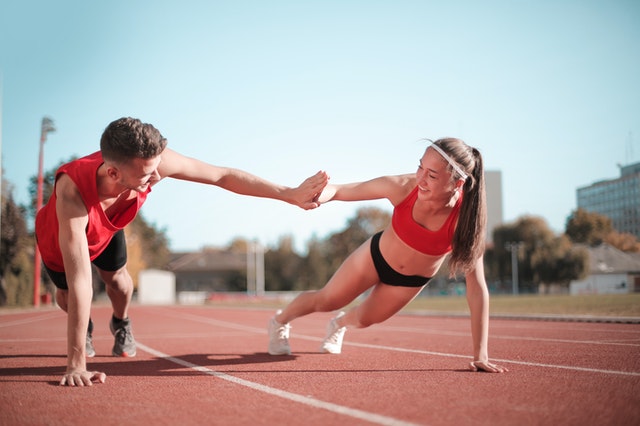7 tips to keep your joints healthy

7 tips to keep your joints healthy
(1) Maintain a healthy body weight
Maintaining healthy body weight, you can limit the amount of stress on your joints and can reduce the chances of joint damage or injury or disease.
(2) Move your body
You should move around and avoid staying in one position for long to reduce stiffness in your joints and can improve joint health and reduce to get injury, damage, and disease.
Doing any type of exercise regularly you can improve your joints strength. Stronger joint is less chances to get injury, damage, disease. Exercise like walking, running, gym workout, swimming, Zumba, cycling, dancing, football, cricket, any type of sports.
(4) Lifting heavy objects with proper posture
If you are lifting any heavy object then do it with proper posture to avoid any joint damage, injury, and disease.
(5) Healthy diet
Healthy diet always keeps your body healthy as well as your joints. Healthy joints reduce chances to get injury, damage, and disease.
(6) Walking everyday
Walking is the easiest way to keep your body healthy. You can walk anywhere you are comfortable like outside your house or inside your house.
(7) Food to improve joints health
Milk product, chicken, nuts, fish( salmon is best), olive oil, Tomato, green vegetable, fruits, ginger, cumin, turmeric.
Know your joints details and how it work
Tendons
Muscles are not attached directly to bones or other muscles. They are connected by a tough cord of connective tissue called a tendon. A tendon may connect a muscle to another muscle. Or a muscle to a bone. The thickest tendon the human body is the Achilles’ tendon. It attaches the calf muscle to the heel bone. From a exercise perspective, the biceps tendon, which connects the biceps to the radius bone of the forearm, is probably the most familiar. Tendons add length and thickness to muscles. And are especially important in reducing muscle strain.
Ligaments
Bones held together by fibrous connective tissue called ligaments. Varying in shape and even strength. Depending on their location and function. Most ligaments are considered inelastic. Yet they are pliable enough to permit movement. Ligaments tend to tear rather than stretch. But because of their strength they can withstand a great amount of stress. When it tear, the condition mark by intense pain and swelling. Surgery often need to correct the problem.
Cartilage
Cartilage is a specialized type of connective tissue and can call the shock absorbers of the body. Its main function is to prevent bones from rubbing against one another within a joint. With time, disease or injury, cartilage tissue may become damaged. Resulting in reduced movement and pain.
One of the most frequent sports injuries is torn knee cartilage. When this happens, the cartilage may become lodged between the upper (femur) and lower (tibia) leg bones, causing the joint to lock. Using microscopic tools, surgeons can repair the damaged cartilage and allow movement much sooner. Preventing the surrounding muscles from atrophying. As with other sports, the most common exercising injuries concern the knee region. Bouncing at the bottom of the squat does not make for a great set of thighs. Neither does forcefully locking out in the leg extension. These motions lead to damaged knees. Remember to always perform the movements in a nice, slow, and controlled manner.
Bursae and Tendon Sheaths
Two other structures associated with muscles and joints are bursae and tendon sheaths. Bursae flattened sacs filled with synovial fluid. They found wherever it is necessary to eliminate the friction that occurs when a muscle or tendon rubs against another muscle. Tendon or bone. Bursae also cushion certain muscles and facilitate the movement of muscles over bony surfaces. A modification of bursae tendon sheaths-long cylindrical sacs fill with synovial fluid that surround long tendons. Tendon sheaths allow tendons to slide easily. They found in areas where the tendons are under constant movement and friction such as your wrists fingers and palms.
How joint repair in body
Unlike a machine, which cannot repair itself. And the human body is continuously modifying its physiology. If a harmful organism invades. And antibodies and white blood cells rush to the body’s defence. it take few days to repair a small skin abrasion. And muscle growth follows a similar pattern.
Repair involves the use of building blocks called amino acids. The body combines the amino acids into protein protein which is then integrated into muscle tissue.
An interesting fact about the recuperation process is that the body does not repair the muscle as it was. Instead it goes a step further, making the muscle slightly larger and stronger. In fact your body is saying that was a great deal of stress. That repaired muscle is now stronger than before. Once the extra muscle tissue has been built, you can see that your body will handle that weight quite well.
Off course the opposite can also occur if a muscle or joints is not regularly exercised it begins to shrink. Thus process called muscular atrophy. A good example of atrophy can be seen in astronauts who spend long periods of time in orbit. The reduced gravity means their muscles does not have to work as hard and they lose muscles mass.
How to increase your joint and muscle strength
Evidence and many researches confirmed that intense for of any exercise exercise (best way is gym workout) can cause individual muscle fibres to split. Each part of a split cell will become a cell on its own. And increase to normal cellular size. This is welcome news for those who were not blessed genetically with a large number of muscles fibres to begin with. To keep the muscle and joints growing you can increase your intense exercise gradually. That way your body is always trying to deal with increased loads by adding a little more muscles tissue.
Pingback: Importance of nervous system - Maximahealthy.com